Discover 20 hidden attractions, cool sights, and unusual things to do in Cheyenne (United States). Don't miss out on these must-see attractions: Wyoming State Capitol, Cheyenne Frontier Days Old West Museum, and Wyoming State Museum. Also, be sure to include Cheyenne Depot Museum in your itinerary.
Below, you can find the list of the most amazing places you should visit in Cheyenne (Wyoming).
Table of Contents
Wyoming State Capitol
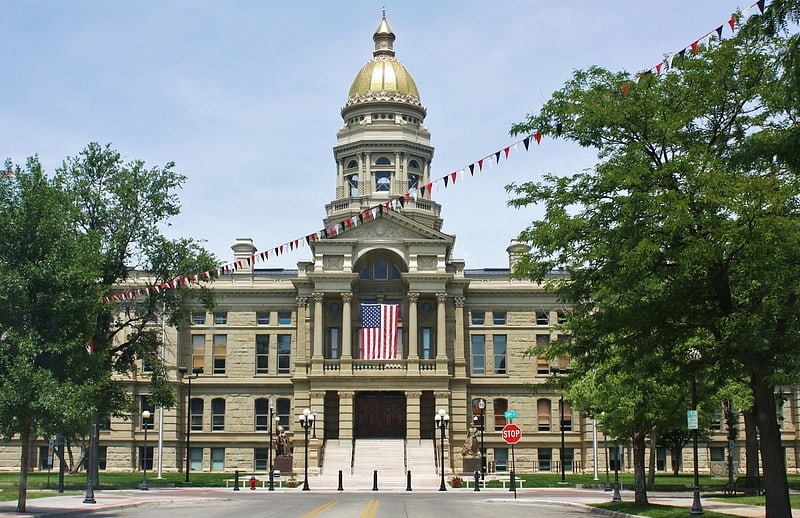
Historical landmark erected in 1887. The Wyoming State Capitol is the state capitol and seat of government of the U.S. state of Wyoming. Built between 1886 and 1890, the capitol is located in Cheyenne and contains the chambers of the Wyoming State Legislature as well as the office of the Governor of Wyoming. It was designated a U.S. National Historic Landmark in 1987. The Capitol underwent an extensive three-year renovation and reopened to the public on July 10, 2019.[1]
Address: 200 W 24th St, 82001-3642 Cheyenne
Cheyenne Frontier Days Old West Museum
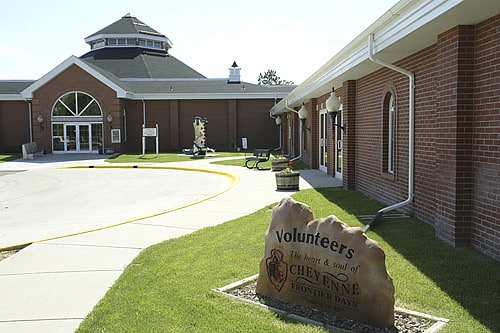
Museum in Cheyenne, Wyoming. The Cheyenne Frontier Days Old West Museum is located in Cheyenne, Wyoming, United States. The museum was founded in 1978. It is a 501 non-profit organization, dedicated to interpreting, conserving and exhibiting the history and material culture of Cheyenne, Cheyenne Frontier Days, the State of Wyoming and the American West. The museum features the Cheyenne Frontier Days Hall of Fame. Permanent exhibits include Western horse-drawn carriages and wagons, the history and memorabilia of Cheyenne Frontier Days rodeo celebration, local history of Cheyenne, pioneer artifacts and clothing, and Western and folk art. The Cheyenne Frontier Days Old West Museum is home to the "World’s Largest Outdoor Rodeo and Western Celebration" with its permanent exhibit on the history of Cheyenne Frontier Days.
Clayton Danks, the winner of three CFD competitions prior to 1910, is the model cowboy on the horse Steamboat on the Wyoming trademark, the Bucking Horse and Rider. The saddle which Danks won in CFD competition in 1907 was donated by his surviving family members to the museum in September 2013.
Shirley E. Flynn, director of the museum from 1987 to 1991, penned the history of the Frontier Days celebration in her 1996 book Let's Go! Let's Show! Let's Rodeo! The History of Cheyenne Frontier Days.[2]
Address: 4610 Carey Ave, 82001-7500 Cheyenne
Wyoming State Museum
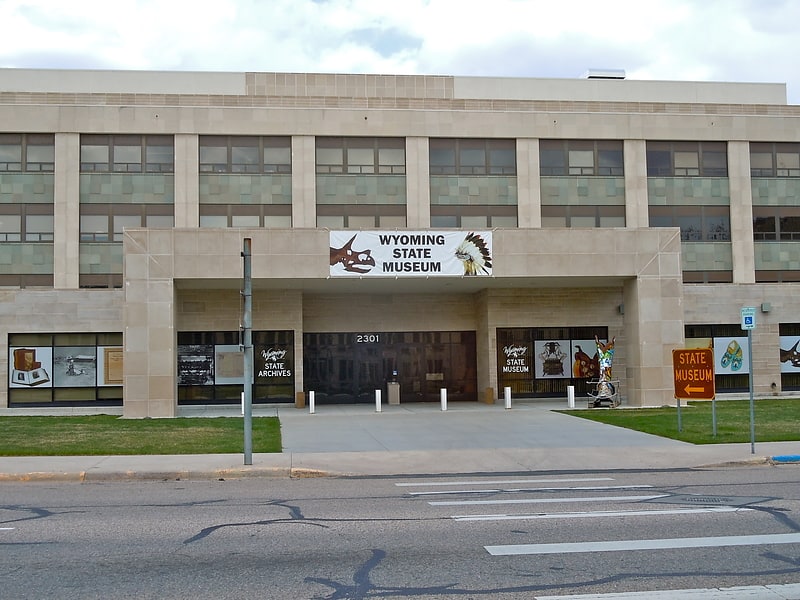
Museum in Cheyenne, Wyoming. The Wyoming State Museum is a state-run museum established in 1895 in Cheyenne, Wyoming. It is the official state repository for material concerning Wyoming history and cultural heritage.
Permanent exhibit themes include coal, flora and fauna, fossils, Wyoming settlement, Native American culture and history, the National Park Service in Wyoming, and other Wyoming-related issues. The museum also hosts a variety of temporary exhibits and provides traveling exhibits to cultural institutions in Wyoming and surrounding states.[3]
Address: 2301 Central Ave, 82001-3110 Cheyenne
Cheyenne Depot Museum
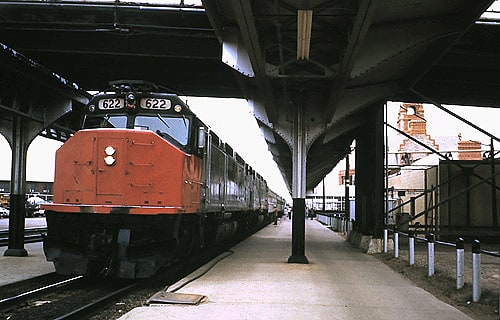
Museum in Cheyenne, Wyoming. The Cheyenne Depot Museum is a railroad museum in Cheyenne, Wyoming. It is located inside the historic Union Pacific Railroad depot, built in the 1880s. The depot, a National Historic Landmark, was the railroad's largest station west of Council Bluffs, Iowa, and a major western example of Richardsonian Romanesque architecture.
The museum, founded in 1993, interprets Cheyenne's early history and that of the construction of the Union Pacific Railroad. It hosts an annual Steam Train Excursion in July, and Depot Days, in which tours are offered of other railroad facilities.[4]
Address: Cheyenne, 121 West 15th Street, Cheyenne, Wyoming 82001
Cheyenne Botanic Gardens

Botanical garden in Cheyenne, Wyoming. The Cheyenne Botanic Gardens are located in Lions Park in Cheyenne, Wyoming, with an associated High Plains Arboretum located five miles northwest of Cheyenne at an elevation of 6,200 feet.
The gardens began as a vision in 1977 to build a non-profit, solar heated greenhouse. Today, the 6,800 square foot (630 m2) conservatory consists of three greenhouses. The first is filled with tropical plants, herb and cacti gardens and a waterfall pond filled with Koi fish. The second is used primarily for growing vegetables, the third is focused on propagation of bedding plants and flowers for the botanic garden grounds and all flowers for the Cheyenne park system. Outside are many gardens featuring many flowers and cacti.[5]
Address: Yellowstone & Central Ave, 82001 Cheyenne
St. Mary's Catholic Cathedral
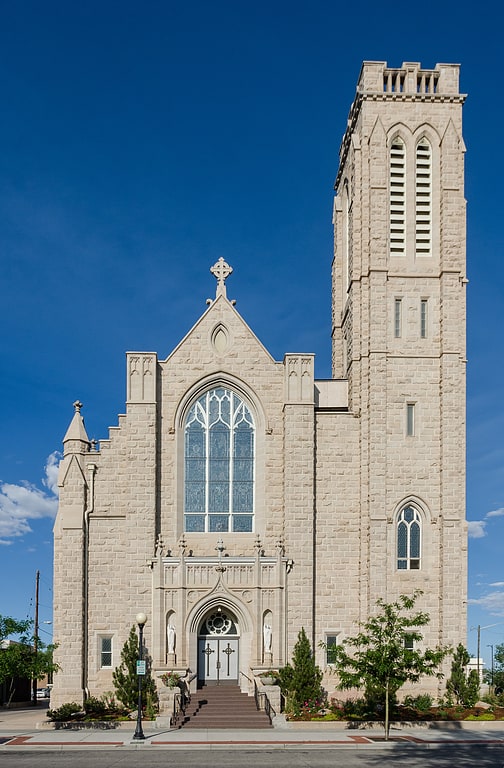
Cathedral in Cheyenne, Wyoming. St. Mary's Cathedral is the cathedral and parish church in the Diocese of Cheyenne located in Cheyenne, Wyoming, United States. It was listed on the National Register of Historic Places in 1974.[6]
Address: 2107 Capitol Ave, 82001 Cheyenne
Joseph C. O'Mahoney Federal Center
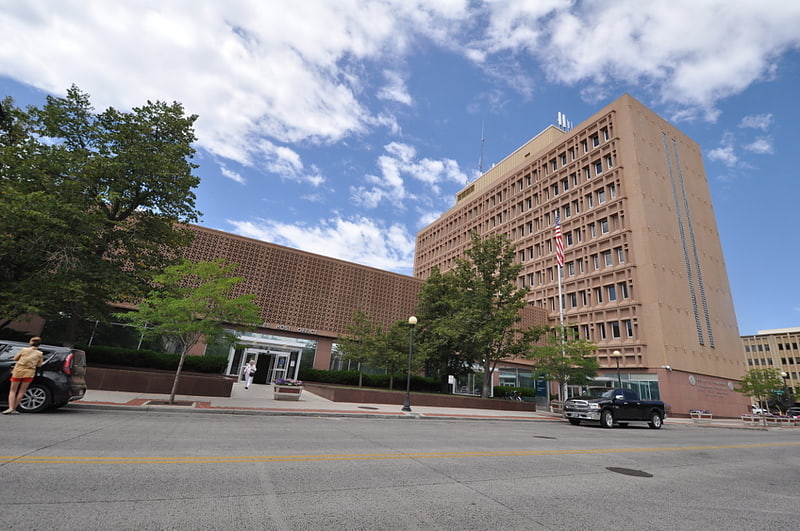
The United States Post Office and Court House in Cheyenne, Wyoming, also called the Joseph C. O'Mahoney Federal Center, was listed on the National Register of Historic Places in 2017.
It is a four-story building.[7]
Address: 2120 Capital Ave, Cheyenne
St. Mark's Episcopal Church
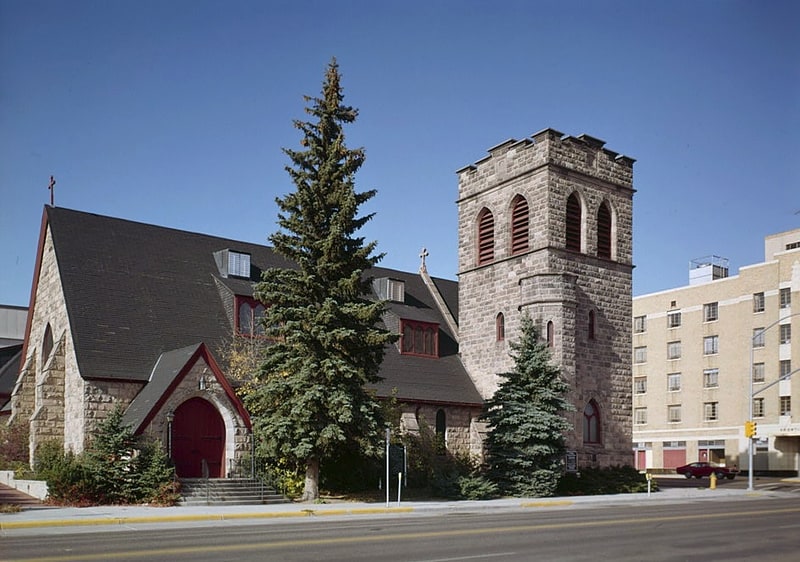
Church in Cheyenne, Wyoming. St. Mark's Episcopal Church is a historic church in Cheyenne, Wyoming.
It was designed by architect Henry M. Congdon in an Old English style and was built during 1886–1888. It was added to the National Register of Historic Places in 1970.
The church was supposedly designed in the style of the 1080-built Stoke Poges Church near London, in England.[8]
Address: 1908 Central Ave, 82001 Cheyenne
Nelson Museum of the West
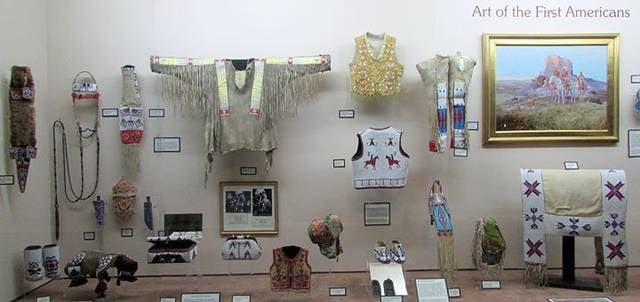
Museum, History museum
Address: 1714 Carey Ave, 82001-4420 Cheyenne
Atlas Theatre

Theatre in Cheyenne, Wyoming. The Atlas Theatre, also known as the Atlas Building, at 213 W. 16th St. in Cheyenne, Wyoming, was dating from 1887 and was built out as a theatre in 1908. It was listed on the National Register of Historic Places in 1973.
It "is located in what has historically been the heart of Cheyenne's downtown business district, " and, at the time of NRHP listing, was "still surrounded by commercial activity".
During 1887 to 1908 the upper floors of the three-story building were used for professional offices and the ground floor was a confectionery shop. The theatre was not the first or most extravagant of theatres in Cheyenne; the Capitol Avenue Theatre, built in 1905 "was probably more impressive than the Atlas. Nevertheless, at that time there apparently was room in Cheyenne for another facility, one which could provide low-cost amusement, and thus the Atlas was built."[9]
First United Methodist Church
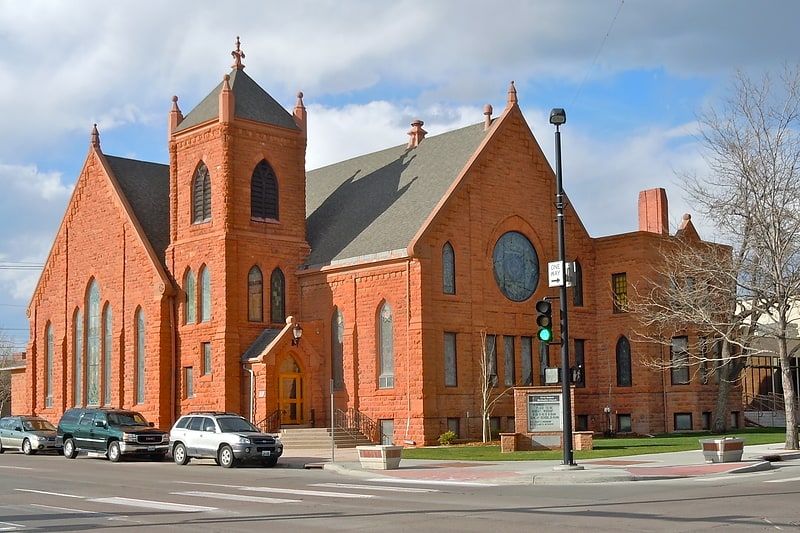
Church building in Cheyenne, Wyoming. First United Methodist Church is a historic Methodist church building at the northeast corner of 18th Street and Central Avenue in Cheyenne, Wyoming, United States.
The congregation was founded in 1867. The church building at 18th and Central was constructed in 1890 and added to the National Register of Historic Places in 1975.[10]
Address: 108 E 18th St, Cheyenne
Wyoming Governor's Mansion
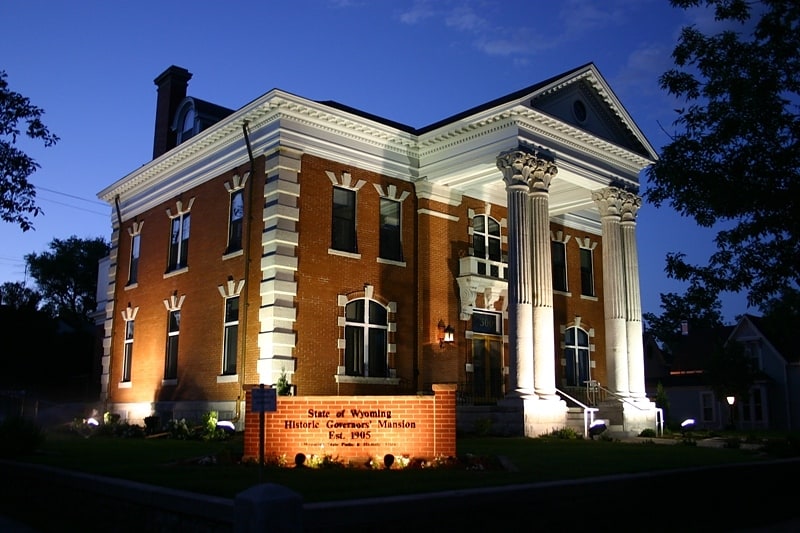
Historical place museum in Cheyenne, Wyoming. The Wyoming Governor's Mansion is the official residence of the governor of Wyoming. The current mansion was built during 1976 in Cheyenne.
The public can tour the residence on Monday, Tuesday, Wednesday, Thursday, Friday and Saturday from 9:00am to 5:00pm and Sunday 1pm to 5pm. There is no admission fee.[11]
Address: 300 East 21st St, Cheyenne
City and County Building

Building in Cheyenne, Wyoming. The City and County Building, also known as the City-County Building, at 19th St. and Carey Ave. in Cheyenne, Wyoming, was built during 1917–1919. It was designed by architect William Dubois in Classical Revival style.
It was listed on the National Register of Historic Places in 1978. It was deemed significant for association with the Laramie County government and the City of Cheyenne governments' development, as well as "for the quality of its craftsmanship and detailing." It combined city hall and courthouse functions and originally held 14 county and six city offices, besides courts.[12]
Address: 1900 Carey Avenue, Cheyenne
Cheyenne Flour Milling Company
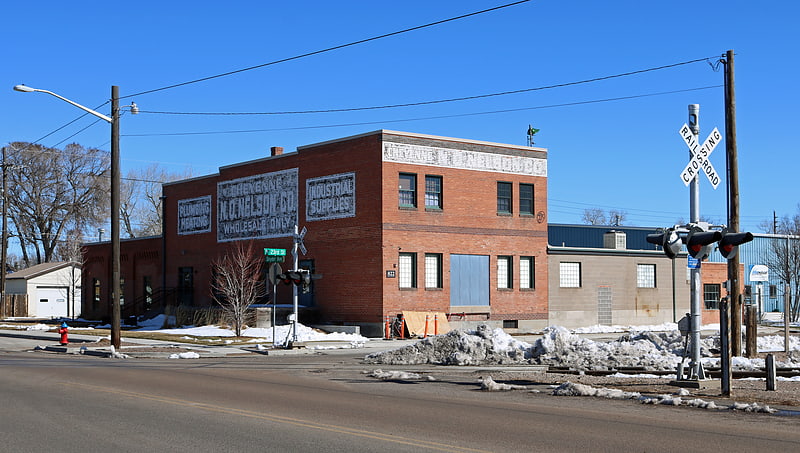
The Cheyenne Flour Milling Company, also known as the Standard Oil Company and Salt Creek Freightways, is an early warehouse building in Cheyenne, Wyoming. The structure was built in 1927 to house goods brought to and from Cheyenne by the Union Pacific Railroad in an industrial section of Cheyenne as a flour mill, replacing structures that had performed similar functions since 1915. By 1931 the building was shared by a warehouse for electrical parts for the Mountain States Telephone and Telegraph Company, a potato chip factory and a chemical products company. In 1937-38 the Standard Oil Company started to use the warehouse for bulk petroleum products storage, continuing to 1963. From 1963 the building was used by Salt Creek Freightways, which had shared use from 1936. In 1973 it became a plumbing parts warehouse, and by 2003 was owned and used by a general contractor.
The oldest section of the L-shaped building is a one-story masonry building, 40 feet (12 m) by 32 feet (9.8 m), with a flat roof. A brick two-story section dates to 1927 and measures 70 feet (21 m) by 32 feet (9.8 m). This section has a stepped parapet. A cone-story concrete block addition was built in 1936, measuring about 36 feet (11 m) by 16 feet (4.9 m). Another brick addition abuts the connector, and appears to have been built as an office. Some of the masonry exhibits fire damage, attributed to its time as a potato chip factory. The facades retain a number of painted signs for the businesses that operated there.
The complex was placed on the National Register of Historic Places in 2003.[13]
Continental Oil Company
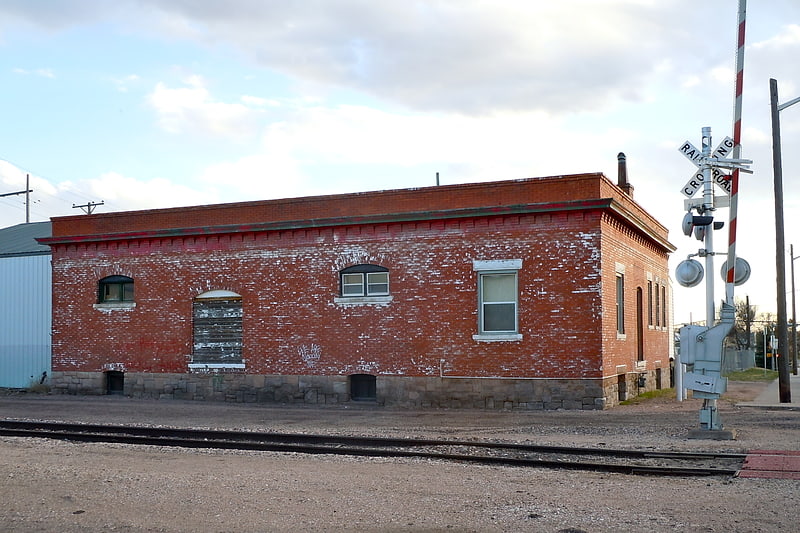
The Continental Oil Company building complex is a significant component of railroad-related economic activity in Cheyenne, Wyoming. Built beginning in 1905, the complex was used by the Continental Oil Company for bulk oil storage through much of the 20th century. The property was transferred to the Sioux Oil Company, which vacated the complex in 1990. In 2000 the property was occupied by a trailer sales business.
The three-building property is associated with a rail line that runs next to Reed Avenue on the west side of Cheyenne. Building 1 measures 40 feet (12 m) by 60 feet (18 m). The building is built over a shallow basement, expressed on the facade with sandstone masonry. The east side is the most detailed elevation with a corbeled, dentiled cornice that extends around to the north side. A brick addition on the south side was used as an oil pump house. The west side features a wood loading dock. The interior is mostly open space with a small office area.
Building 2 is a 35-foot (11 m) by 26-foot (7.9 m) one-story brick garage. Building 3 is a 1956 metal building. The site originally had seven large oil tanks, which have been removed. Leakage from the tanks contaminated the site and has required extensive mitigation.
The property was placed on the National Register of Historic Places on October 13, 2003.[14]
McCord-Brady Company
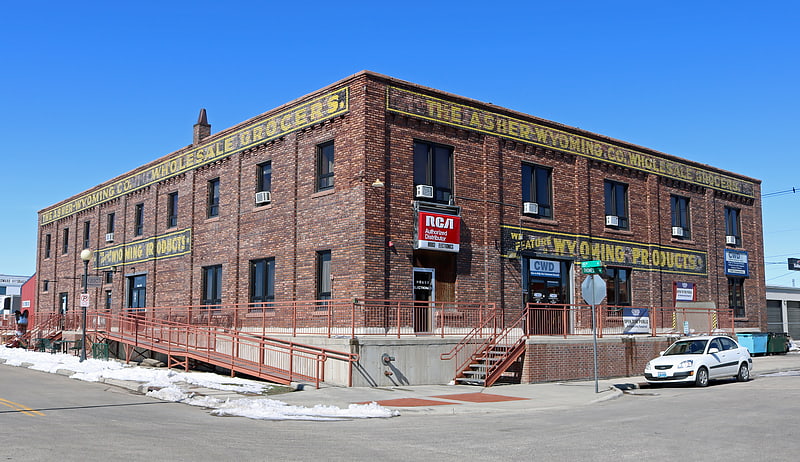
The McCord-Brady Company, at 1506 Thomes Ave. in Cheyenne, Wyoming, was built in 1914–15. It was listed on the National Register of Historic Places in 2003. It has also been known as Asher-Wyoming Company Wholesale Grocers and as Cheyenne Winlectric Company.
It is a flat-roofed two-story dark red brick warehouse building, 88 by 120 feet (27 m × 37 m) in plan. It has a one-story, wood-frame, shed-roofed 49 by 13 feet (14.9 m × 4.0 m) addition from 1966 and a one-story, wood-frame gable-roofed 41 by 15 feet (12.5 m × 4.6 m) addition from 1989.
It was deemed notable
because it represents the early twentieth-century commercial activity in Cheyenne, Wyoming. Cheyenne had its origins as a railroad town created in 1867 by the construction of the first transcontinental railroad, making it an important transportation center from its inception. Therefore, its commercial history was inextricably tied to the railroad. The building at 1506 Thomes Avenue was constructed in ca. 1914-15 and was provided with its own railroad siding on the south side, which has been removed. The Colorado and Southern Railroad laid tracks along the north side of the building; these have also been removed. However, the Union Pacific Railroad freight yards are located directly south of West Fifteenth Street, so that the building retains its physical association with the railroad. The building is a well- preserved example of early twentieth-century factory/warehouse architecture and served as a wholesale grocery warehouse from the time it was built until 1974.[15]
Masonic Temple

Building in Cheyenne, Wyoming. The Masonic Temple in Cheyenne, Wyoming, is a building dating from 1901. It was listed on the National Register of Historic Places in 1984.
It is a 3-story buff brick-veneer building with a concrete foundation. The building burned in 1903 and was rebuilt with very few changes. An addition was added in 1929.[16]
Address: 1820 Capitol Ave, Cheyenne
Tivoli Building
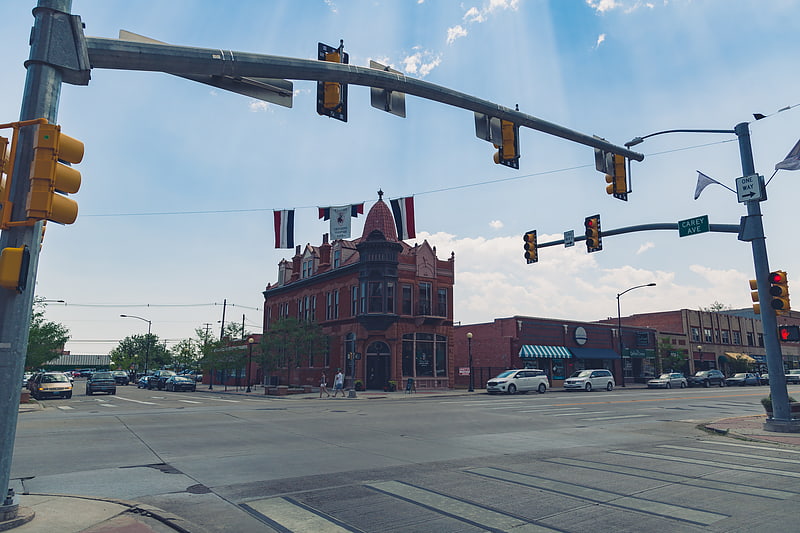
The Tivoli Building is a historic building at 301 West Lincolnway in downtown Cheyenne, Wyoming, and a part of the Downtown Cheyenne Historic District.
The three-story Victorian building was built in 1892. Its design incorporates several elements typical of Queen Anne style architecture, including an oriel window, an octagonal ornamented turret, and use of foliated stone, as well as some Chateauesque and Romanesque Revival architectural elements. The hipped roof of the building and the roof of the turret were both covered with pressed metal sheets. In October 1892 a local newspaper described the new building as "palatial", with interior fixtures "as fine as can be seen in any city west of Chicago".
The Tivoli Building was designed for use as an eating and drinking establishment; it included a cold storage facility that also supported wholesaling of Pabst beer. For many years, it housed a saloon (during Prohibition, a speakeasy) on its main floor and a brothel in its second story. The committee that planned the first Cheyenne Frontier Days in 1897 met in one of the Tivoli Building's upstairs rooms.
The building deteriorated in the 20th century. Its last drinking establishment moved out in the 1960s. It stood vacant for some time before being acquired by the Cheyenne Chamber of Commerce, which completed an interior and exterior renovation in 1981. In 1978, the Tivoli Building was added to the National Register of Historic Places as one of ten contributing buildings deemed to be of "exceptional architectural significance" to the Downtown Cheyenne Historic District.
The Tivoli Building was purchased in 2006 by Matt Mead, who was at the time a U.S. Attorney, and his wife Carol. The Meads completed a partial renovation in 2010. That same year, Matt Mead used the building as his campaign headquarters in his successful effort to be elected governor of Wyoming. In May 2012, Governor Mead and his wife received an award from the city's historic preservation board in recognition of their work to restore the building's interior to match its original design.
Before the Meads purchased the building in 2006, the first floor had housed the Tivoli coffee shop. American City University, an unaccredited distance education institution, earlier had its offices on the second floor. As of 2012, the first floor is the home of a brewpub operated by Freedom's Edge Brewing Company.[17]
Address: 301 West Lincolnway, Cheyenne
Laramie County Milk Producers Cooperative Association
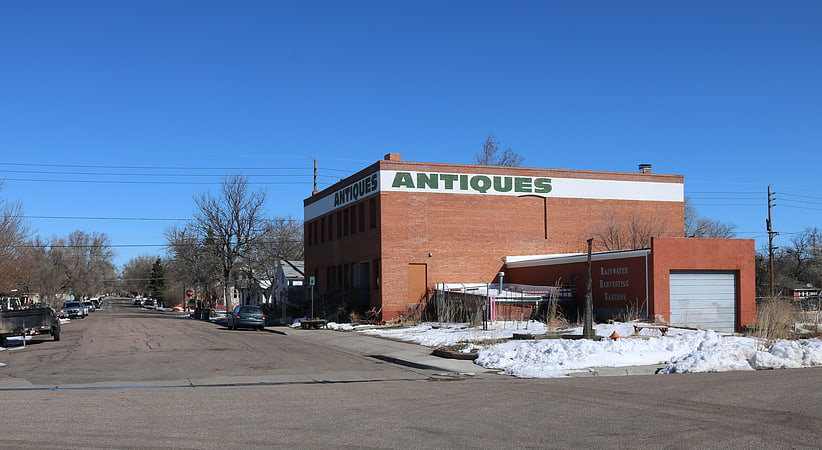
The Laramie County Milk Producers Cooperative Association, at 1122 W. 23rd St. in Cheyenne, Wyoming, was built in 1923. It was listed on the National Register of Historic Places in 2003.
In 2002 it was the home of "Antiques Central". It is a two-story brick masonry factory/warehouse with a flat roof. It originally consisted of a north half 56 by 32 feet (17.1 m × 9.8 m) in plan and a south half 64 by 33.5 feet (19.5 m × 10.2 m) in plan, built on a raised concrete foundation with a full basement.[18]
The Cowgirls of the West Museum and Emporium
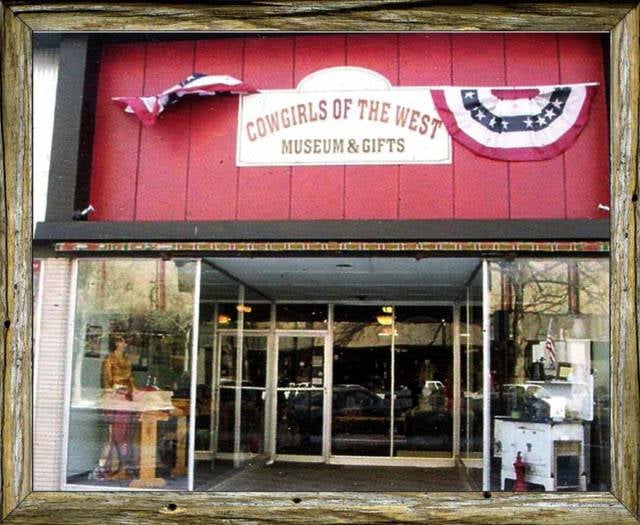
Museum, Specialty museum, History museum
Address: 205 W 17th St, 82001-4411 Cheyenne